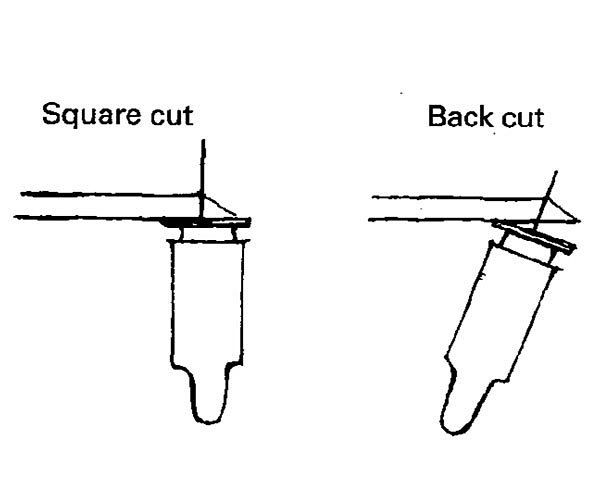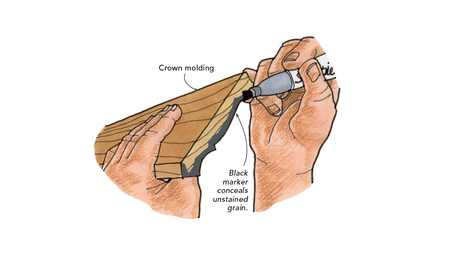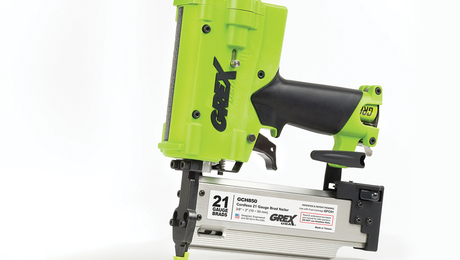
As a trim carpenter, I’ve seen my share of coped and mitered joints. I used to think that mitered corners were the better of the two, but experience has convinced me that mitered joints will never be as tight as coped joints, especially when the walls aren’t square. So I cope all of my baseboard, chair rail and crown molding inside comers, and I cut the copes with a jigsaw.
But cutting coped joints with a jigsaw presents two problems. First, it’s difficult to see the cutline on complicated profiles. And if you try to back-cut your profile for a tighter joint, the jigsaw scars the work surface as the saw bounces around because the saw doesn’t have a flat surface to rest on.
As a result, I use my jigsaw upside down. As shown in the drawing, I start the cut from the bottom, resting the material on the saw’s shoe and angling the workpiece upward to create the back cut.
I hold the material with my left hand, and I feed the saw through it with my right hand. This position gives me greater control of the saw and a perfect view of the cut.
Because the saw is upside down and, therefore, is cutting on the down stroke, it isn’t necessary to use a fine-tooth blade. Instead, I use a stagger-tooth finish blade, which removes material quickly while leaving a crisp edge on the face of the molding. I use a short blade for chair rail and a 4-in. blade for crown moldings because the longer blade allows me to negotiate the deeper cuts and differing angles presented by crown moldings.
David Barbaree, Miami, FL





























